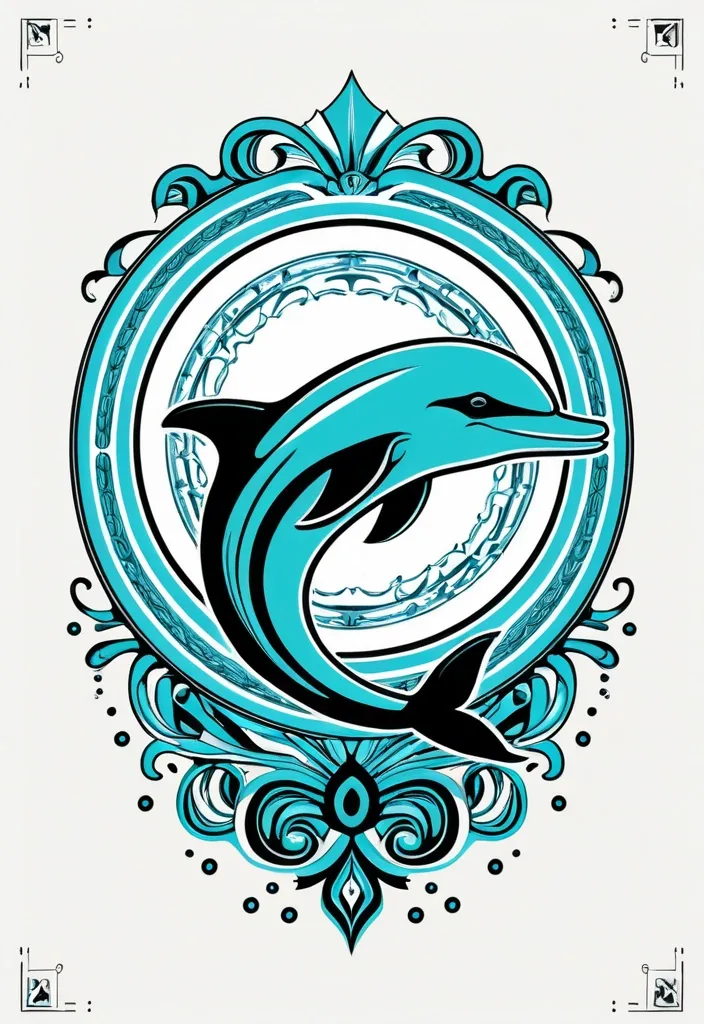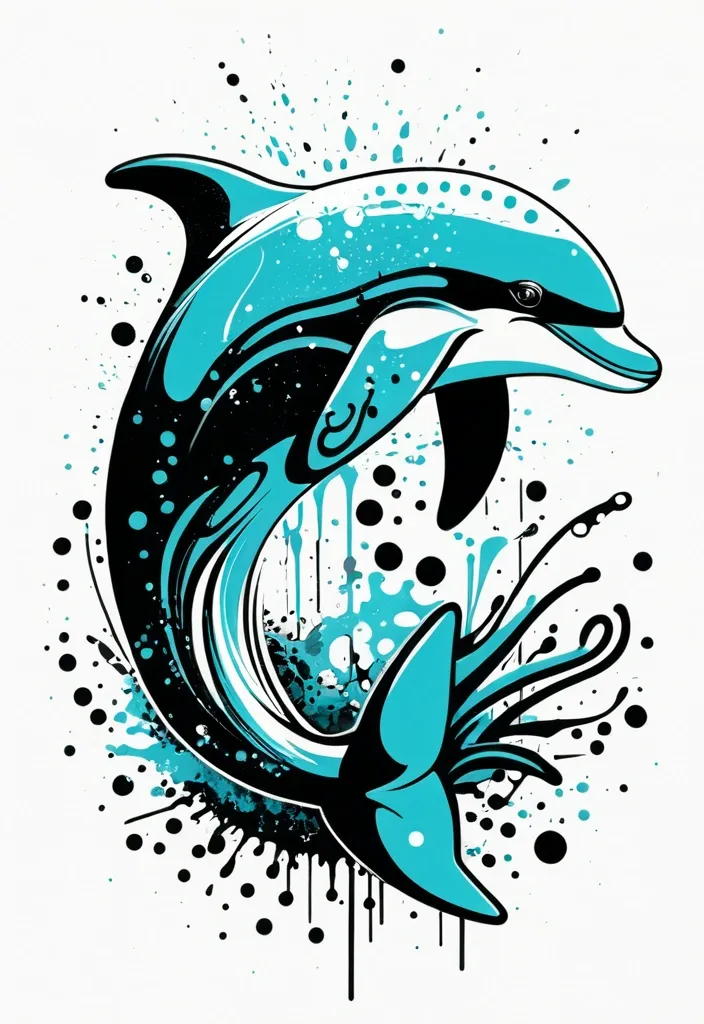Search Results for table
Explore AI generated designs, images, art and prompts by top community artists and designers.

A combining a realistic figure with abstract organic forms resembling flowers and seashells , photo-realistic full length , freckled brown wavy shoulder hair kazaki woman in her mid twenties , A mysteriously veiled lady wears an intricately designed Vortex mask , wearing black and bronze corset opened lace steampunk dress , gracefully radiates charm , barefoot. Natural face , small nose , with natural makeup with expressive , bright blue eyes and a gentle smile. She have her right hand on her hair. she's laying on a red comfortable sofa , she is in a wooden steampunk boudoir. we can see a black moon through a window. ,

masterpiece photorealistic full-length freckled brown wavy shoulder hair european woman in her mid twenties , wearing green and bronze corset opened lace steampunk dress , gracefully radiates charm , barefoot. Natural beautiful face , , with natural makeup with expressive , bright blue eyes and a gentle smile. She have her right hand on her hair. she's laying on a red confortable sofa , she is in a wooden steampunk boudoir. we can see a blue moon through a window ,

masterpiece photorealistic full-length freckled brown wavy shoulder hair european woman in her mid twenties , wearing green and bronze corset opened lace steampunk dress , gracefully radiates charm , barefoot. Natural beautiful face , , with natural makeup with expressive , bright blue eyes and a gentle smile. She have her right hand on her hair. she's laying on a red confortable sofa , she is in a wooden steampunk boudoir. we can see a blue moon through a window ,

masterpiece photorealistic full-length freckled brown wavy shoulder hair european woman in her mid twenties , wearing green and bronze corset opened lace steampunk dress , gracefully radiates charm , barefoot. Natural face , small nose , with natural makeup with expressive , bright blue eyes and a gentle smile. She have her right hand on her hair. she's laying on a red confortable sofa , she is in a wooden steampunk boudoir. we can see a blue moon through a window ,

masterpiece photorealistic full-length freckled brown wavy shoulder hair european woman in her mid twenties , wearing green and bronze corset opened lace steampunk dress , gracefully radiates charm , barefoot. Natural face , small nose , with natural makeup with expressive , bright blue eyes and a gentle smile. She have her right hand on her hair. she's laying on a red confortable sofa , she is in a wooden steampunk boudoir. we can see a blue moon through a window ,

masterpiece photorealistic full-length freckled brown wavy shoulder hair european woman in her mid thirties , wearing blue and bronze corset opened lace steampunk dress , gracefully radiates charm , barefoot. Natural face with natural makeup with expressive , bright blue eyes and a gentle smile. She have her right hand on her hair. she's laying on a red confortable sofa , she is in a wooden steampunk boudoir. we can see a blue moon through a window ,

masterpiece photorealistic full-length freckled brown wavy shoulder hair european woman in her mid thirties , wearing blue and bronze corset opened lace steampunk dress , gracefully radiates charm , barefoot. Natural face with natural makeup with expressive , bright blue eyes and a gentle smile. She have her right hand on her hair. she's laying on a red confortable sofa , she is in a wooden steampunk boudoir. we can see a blue moon through a window ,

masterpiece photorealistic full-length freckled brown wavy shoulder hair european woman in her mid thirties , wearing blue and bronze corset opened lace steampunk dress , gracefully radiates charm , barefoot. Natural face with natural makeup with expressive , bright blue eyes and a gentle smile. She have her right hand on her hair. she's laying on a red confortable sofa , she is in a wooden steampunk boudoir. we can see a blue moon through a window ,

masterpiece photorealistic full-length freckled brown wavy shoulder hair european woman in her mid thirties , wearing blue and bronze corset opened lace steampunk dress , gracefully radiates charm , barefoot. Natural face with natural makeup with expressive , bright blue eyes and a gentle smile. She have her right hand on her hair. she's laying on a red confortable sofa , she is in a wooden steampunk boudoir. we can see a blue moon through a window ,

Kay Nielsen , Basil Gogos , Alberto Savinio , James Gurney , Surrealism , full-length freckled brown wavy shoulder hair Morrocan woman in her early forties , wearing regal blue lehenga embroidered design reflects a unique charm , gracefully radiates charm , barefoot. Her face is distinctly human with expressive , bright blue eyes and a gentle smile. She have her right hand on her hip. she's laying on a red confortable sofa and hugging lovely a 25yo freckled pale long auburn hair beautiful young elfic , they are in a wooden steampunk boudoir. we can see a blue moon through a window ,

Hyper-realistic top-down macro photography. A long , light green WhatsApp speech bubble acting as a dining table. Two real living Indian young man (shrunk to tiny scale) are sitting at opposite ends. They are NOT plastic figures; they have visible skin texture , natural hair , and realistic clothing folds. They are eating real birthday cake that looks freshly cooked , not play-doh. The text inside reads: "HAPPY BIRTHDAY". Bottom right has a timestamp '3:33 PM' and blue ticks. The background is completely filled with a high-density , seamless WhatsApp doodle pattern (line art birthday icons) covering the entire surface edge-to-edge with no empty spaces , resembling the original dense WhatsApp wallpaper. Professional studio lighting , 8k resolution , sharp focus. ,

Chef-d'œuvre photoréaliste en pied , une grotte abandonnée avec des murs en briques rouges , une vieille table verte avec des cartes de poker dessus , des pièces aussi , trois verres de whisky et une bouteille inversée de celui-ci , un cendrier avec une cigarette consumée dessus , lumière provenant d'un éclairage au gaz sur les murs ,

Chef-d'œuvre photoréaliste en pied , une grotte abandonnée avec des murs en briques rouges , une vieille table verte avec des cartes de poker dessus , des pièces aussi , trois verres de whisky et une bouteille inversée de celui-ci , un cendrier avec une cigarette consumée dessus , lumière provenant d'un éclairage au gaz sur les murs ,

In hyperrealistic style , generate a landscape format image of two people sitting in a Japanese style room lit by soft golden and reddish orange lantern lights. The interior of the room is zen minimalistic , with traditional black , white , beige , red , pink , and gray colors. Include shoji screens , tatami , a low tea table , and similar traditional Japanese furniture elements in the interior design. The two people (one man and one woman) are not Japanese , but caucasian , with mediterranean and middle-eastern facial features , but wearing traditional Japanese kimonos. The man has a beard and short wavy hair. He has middle eastern facial features and strong dark eyebrows. He is wearing an intricate dark burgundy kimono. The woman is a clear winter type with small facial features , strong dark eyebrows and dark bluish black curly hair. The woman is wearing a metallic shimmering royal blue and teal kimono. They are eating gyoza , sushi , wakame , miso soup , ramen , and other traditional Japanese foods and drinks. There are a few incense sticks burning in the room and there are a few bonsai trees on small decorative tables in the corners. The tatami has a rich emerald green color. Outside , visible through the open shoji doors of the room , we can see a Japanese onsen setting with natural pools and rocks , lit by crisp clear bright moonlight. Make the contrast between the interior and exterior strong: the interior should have a warm , soft lighting , and the exterior's moonlight should be sharply contrasted , with strong , clear lines and cool dark coloring. ,

In hyperrealistic style , generate a landscape format image of two people sitting in a Japanese style room lit by soft golden and reddish orange lantern lights. The interior of the room is zen minimalistic , with traditional black , white , beige , red , pink , and gray colors. Include shoji screens , tatami , a low tea table , and similar traditional Japanese furniture elements in the interior design. The two people are not Japanese , but caucasian , with mediterranean and middle-eastern facial features , but wearing traditional Japanese kimonos. The man has a beard and short wavy hair. He has middle eastern facial features and strong dark eyebrows. He is wearing an intricate dark burgundy kimono. The woman is a clear winter type with small facial features , strong dark eyebrows and dark bluish black curly hair. The woman is wearing a metallic shimmering royal blue and teal kimono. They are eating gyoza , sushi , wakame , miso soup , ramen , and other traditional Japanese foods and drinks. There are a few incense sticks burning in the room and there are a few bonsai trees on small decorative tables in the corners. The tatami has a rich emerald green color. Outside , visible through the open shoji doors of the room , we can see a Japanese onsen setting with natural pools and rocks , lit by crisp clear bright moonlight. Make the contrast between the interior and exterior strong: the interior should have a warm , soft lighting , and the exterior's moonlight should be sharply contrasted , with strong , clear lines and cool dark coloring. ,

In realistic style , generate a landscape format image of two people sitting in a Japanese style room lit by soft golden lantern lights. The interior of the room is zen minimalistic , with traditional black , white , beige , red , pink , and gray colors. Include shoji screens , tatami , a low tea table , and similar traditional Japanese furniture elements in the interior design. The two people are wearing traditional Japanese kimonos. The man is wearing an intricate dark burgundy kimono , and the woman is wearing a metallic shimmering royal blue and teal kimono. They are eating gyoza , sushi , wakame , miso soup , ramen , and other traditional Japanese foods and drinks. Outside , visible through the open shoji doors of the room , we can see a Japanese onsen setting with natural pools and rocks , lit by soft moonlight. ,

Create a high-quality Facebook marketing image for Adobe Acrobat Studio featuring a modern professional workspace with a sleek laptop and tablet displaying vibrant PDF documents , AI assistant visuals , and creative design elements , highlighting advanced PDF tools such as PDF editing , OCR , e-signature , file conversion , and document security , alongside AI-powered features like smart Summarization , insights , and automation , and incorporating Adobe Express creative tools elements like templates , graphics , and visual assets , all presented in a clean , premium , and futuristic style with a color palette of deep Adobe red , crisp white , dark gray , and black , set against a minimal background with sharp focus , realistic lighting , and a professional corporate tech look that exudes power , intelligence , and productivity , perfect for a Facebook post advertisement with ultra-high resolution and crisp details. ,

Masterpiece photorealistic full-length freckled brown wavy shoulder hair 40yo beautiful elfic woman wearing a blue and purple sleek , form-fitting victorian steampunk sleeveless turtleneck opened lace swimsuit , barefoot . Her face is distinctly human with expressive , bright blue eyes and a gentle smile. She have her right hand on her hip. she's laying on a red confortable sofa and hugging lovely a 25yo freckled pale long auburn hair beautiful young elfic woman with green eyes , wearing a victorian opened lace green and blue steampunk sleeveless swimsuit with clockworks parts on , barefoot , they are in a wooden steampunk boudoir. we can see a blue moon through a window ,

Masterpiece photorealistic full-length freckled brown wavy shoulder hair 40yo beautiful elfic woman wearing a blue and purple sleek , form-fitting victorian steampunk sleeveless turtleneck opened lace swimsuit , barefoot . Her face is distinctly human with expressive , bright blue eyes and a gentle smile. She have her right hand on her hip. she's laying on a red confortable sofa and hugging lovely a 25yo freckled pale long auburn hair beautiful young elfic woman with green eyes , wearing a victorian opened lace green and blue steampunk sleeveless swimsuit with clockworks parts on , barefoot , they are in a wooden steampunk boudoir. we can see a blue moon through a window ,

Masterpiece photorealistic full-length freckled brown wavy shoulder hair 40yo beautiful elfic woman wearing a blue and purple sleek , form-fitting victorian steampunk sleeveless turtleneck opened lace swimsuit , barefoot . Her face is distinctly human with expressive , bright blue eyes and a gentle smile. She have her right hand on her hip. she's laying on a red confortable sofa and hugging lovely a 25yo freckled pale long auburn hair beautiful young elfic woman with green eyes , wearing a victorian opened lace green and blue steampunk sleeveless swimsuit with clockworks parts on , barefoot , they are in a wooden steampunk boudoir. we can see a blue moon through a window ,

Masterpiece photorealistic full-length freckled brown wavy shoulder hair 40yo beautiful elfic woman wearing a blue and purple sleek , form-fitting victorian steampunk sleeveless turtleneck opened lace swimsuit , barefoot . Her face is distinctly human with expressive , bright blue eyes and a gentle smile. She have her right hand on her hip. she's laying on a red confortable sofa and hugging lovely a 25yo freckled pale long auburn hair beautiful young elfic woman with green eyes , wearing a victorian opened lace green and blue steampunk sleeveless swimsuit with clockworks parts on , barefoot , they are in a wooden steampunk boudoir. we can see a blue moon through a window ,

A hyperrealistic bedroom with expansive , bright windows enhancing the room's luminosity. The design emphasizes well-executed , cost-effective repairs , avoiding extravagance. The furniture , especially the central bed with two sharply defined bedside tables , stands out. Decorative features like the sconces on the bedside tables are prominently visible. ,

A colossal , skyscraper text "King Kong" rises , its surface etched with intricate , number-inspired glass cube carvings. The text "6-7"'s facades are densely populated with a Hong Kong where fantasy and reality intertwine , representing only a specific Hong Kong but also symbolizing human desire , ideals and the inevitable sense of loss. The Hong Kong's skyscraper all spiral paper staircases inlaid with spiral-ling papers , suggesting access to a higher realm; a place where one can make perfect telescopes and violins. Hong Kong is a completely sustainable skyscraper. ,

Highly detailed vector-style illustration of a dolphin , centered composition , symmetrical and emblem-like design. Bold thick black outlines , sharp graphic shapes , strong contrast. Limited color palette with dominant tones of blue , turquoise , white , and black , with subtle accent colors. Tattoo-inspired and street-art aesthetic , modern graphic poster style. Decorative ornamental elements integrated into the dolphin’s body and background. Clean vector look suitable for T-shirt print , high resolution , flat colors , no gradients. Dynamic , powerful , and slightly aggressive yet elegant mood. White background. At the bottom , stylized hand-lettered text: “My Crimea”. ,

A highly detailed graphic illustration of a dolphin , designed for t-shirt print. Symmetrical composition , bold thick black outlines , sharp graphic shapes. Style inspired by street art , tattoo art and graffiti illustration. Limited color palette: black , white , shades of blue and turquoise , with accent splashes and ink drips. High contrast , clean vector-like finish , strong central composition. Decorative elements around the dolphin: abstract shapes , ornamental lines , halftone dots , paint splashes. Modern urban aesthetic , edgy but clean , suitable for apparel design. White background. At the bottom of the illustration , add hand-drawn lettering text: “My Crimea”. Ultra high resolution , print-ready , no background texture. ,

A futuristic aerospace e-bike hovering above a neon-lit city at dusk , captured from a dramatic low-angle perspective. The bike features a streamlined , aerodynamic design with metallic gold , burgundy , and off-white highlights. Anti-gravity thrusters emit a faint glow and subtle exhaust trails. The frame has intricate carbon fiber textures and illuminated panels , with retractable stabilizers extended mid-hover. Reflections and lens flares accentuate the hover effect , while motion blur suggests dynamic movement. Epic , cinematic lighting with volumetric fog and soft ambient glow. Highly detailed 3D concept art style , ideal for product promotion or futuristic vehicle showcase. ,

"Create a highly detailed , visually stunning digital artwork of a floating futuristic city at sunset , in the style of cyberpunk , with neon and purple color palette , emphasizing a mysterious and energetic atmosphere. The artwork should have glowing reflections and misty effects and be suitable for a digital print. Focus on creativity , originality , and cinematic composition." ,

"Create a highly detailed , visually stunning digital artwork of a mystical forest with floating islands , in the style of watercolor fantasy , with pastel shades colors , emphasizing a calm and dreamy atmosphere. The artwork should have soft mist and painterly brush strokes and be suitable for a digital print. Focus on creativity , originality , and cinematic composition." ,

"Create a highly detailed , visually stunning digital artwork of a mystical forest with floating islands , in the style of watercolor fantasy , with pastel shades colors , emphasizing a calm and dreamy atmosphere. The artwork should have soft mist and painterly brush strokes and be suitable for a digital print. Focus on creativity , originality , and cinematic composition." ,
